Insights
Here's how beautiful research can be! On this page we have gathered the most exciting vistas from our labs from the "Insights" section of our research magazine. You want more? That's easy, you just have to subscribe (for free) to Empa Quarterly here.
Empa Quarterly #84: A smart dummy
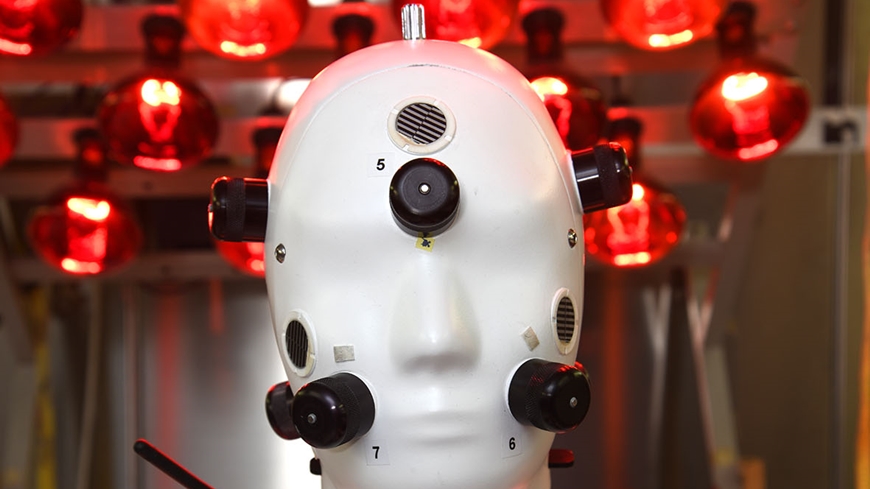
Manikins – sensor technology for the perfect room temperature: Smart dummies such as this futuristic-looking manikin use sensor technology and mathematical modeling to detect how offices can be brought to a comfortable temperature. Energy consumption for air conditioning units in Switzerland is now in the terawatt range every year, i.e. in the order of billions of kilowatt hours. Researchers from Empa's Biomimetic Membranes and Textiles laboratory are therefore working together with EPFL and the Polish Silesian University of Technology to obtain reliable data on indoor climate at the workplace. Their aim is to air-condition indoor spaces more efficiently while maintaining people's health and performance.
Biomimetic Membranes and Textiles Laboratory
Empa Quarterly #83: A promising "lasagna"
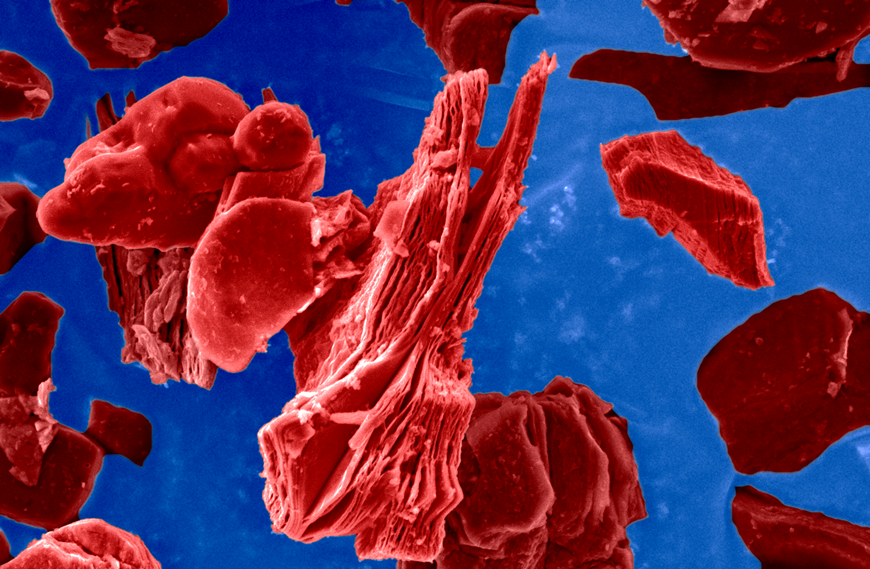
A little like graphene, and yet very different: MXenes are a group of 2D materials that could eventually enable a wide range of applications in medicine, energy storage and catalysis. They are produced from nanolaminated ceramic crystals, so-called MAX phases. M stands for a transition metal, X for carbon or nitrogen and A for an additional element, which can be metallic or non-metallic. The M, A and X layers are stacked on top of each other in the crystal, similar to the layers of a lasagna. When researchers etch away the A layer of a MAX phase, as shown in this image, extremely thin MX layers – the MXenes – are formed. An interdisciplinary team of researchers from the Empa laboratories High-Performance Ceramics, Functional Polymers, nanotech@surfaces and Building Energy Materials and Components has recently launched a two-year research project in order to take a closer look at this class of materials, which has only been known since 2011.
More information:
Laboratory for High Performance Ceramics
Laboratory for Functional Polymers
«nanotech@surfaces» Laboratory
Laboratory for Building Energy Materials and Components
Empa Quarterly #82: Your branches green delight us!
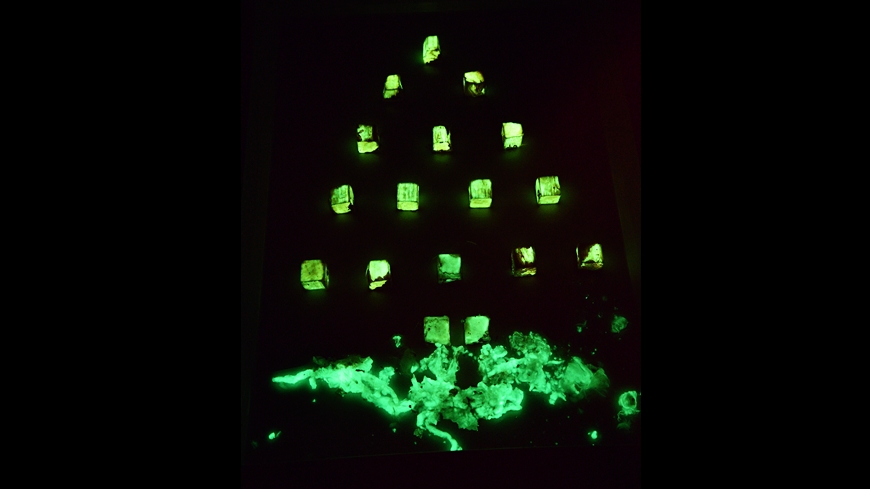
The Christmas tree in this picture doesn't need any candles. It glows bright green all by itself – thanks to bioluminescence. Empa researcher Francis Schwarze has developed a process for producing bioluminescent wood using fungi. The fungal filaments of a white rot fungus penetrate the wood and feed on wood components, producing the light-generating substance luciferin. Similar to fireflies, the functionalized wood emits a greenish light in the dark thanks to the glowing fungal filaments. Glowing "snow" also piles up at the base of the tree. Here, the fungi grow in cellulose fibrils made from wood residues. So when the lights in Empa's fungal lab go out in the evening, the bioluminescent Christmas tree shines in all its glory. Image: Empa
More information: Empa - Cellulose & Wood Materials - Research Topics
Empa Quarterly #81: The beauty of imperfection
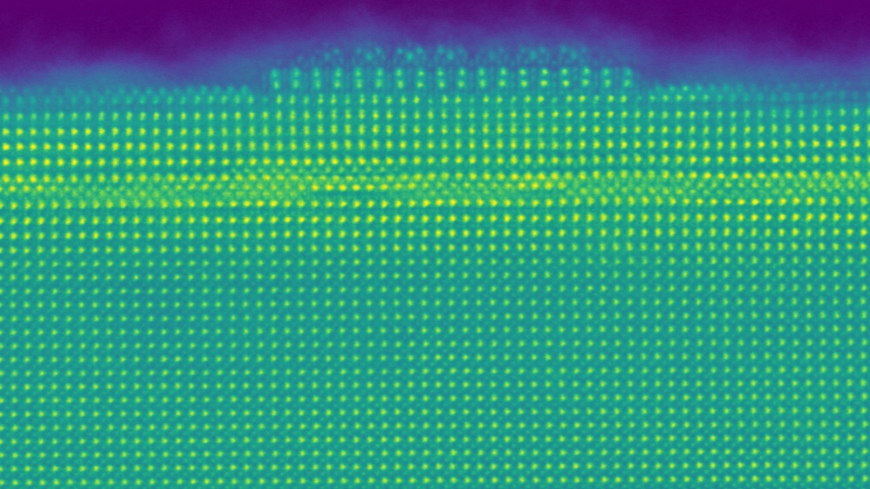
Crystal defects can drastically change the properties of functional materials such as "ferroelectrics". These materials have a polarity - comparable to magnets with a north and a south pole, but which can be reversed by applying an electric rather than a magnetic field. This property makes ferroelectrics suitable for use in data storage devices, for example in computers. However, optimizing them for technological applications requires a thorough understanding and precise control of possible defects. Researchers at Empa's Electron Microscopy Center are using state-of-the-art image analysis methods based on scanning transmission electron microscopy to study such "defects" in crystals at the atomic level. In this atomic resolution image, an ultrathin ferroelectric film (the layer of yellowish dots) shows a conspicuous arrangement of particles at the top edge. These atomic "pillars", arranged in pairs on top of each other, can negatively affect the ferroelectric property of the thin film.
More information: /web/s299
Empa Quarterly #80: The learning machine

Gaming hardware at the service of science: These graphics processing units (GPUs) are being used to train deep neuronal networks for rapid classification of carbon nanotubes. Empa researchers measure large quantities of nanotubes using Raman spectroscopy and the neural network interprets the results – a method that enables significantly faster acquisition speeds of the Raman spectra. This will facilitate future applications of carbon nanotubes. The project involves researchers from Empa, ETH Zurich and EPFL and is led by Empa's Transport at Nanoscale Interfaces lab. It is a part of the Strategic Focus Area "Advanced Manufacturing" of the ETH Domain.
More information: www.empa.ch/web/s405/high-speed-raman-imaging
Empa Quarterly #79: A scary (bio-)film
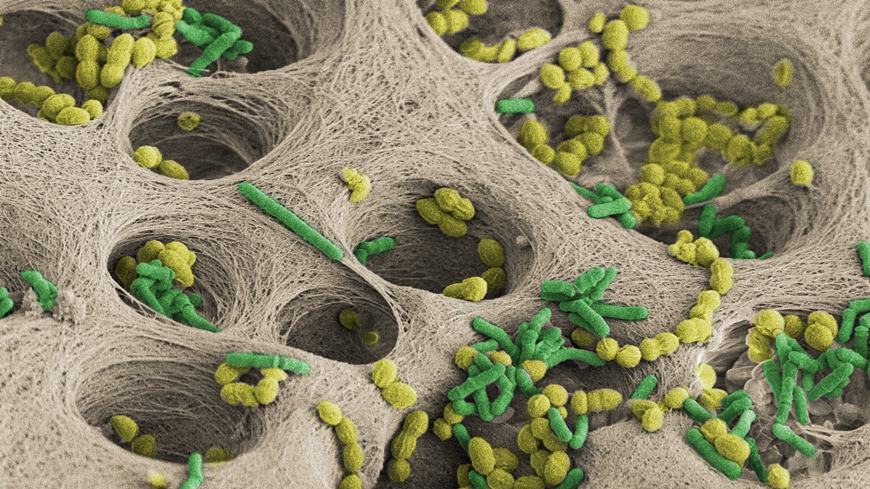
Hygiene is taking a back seat in this horrendous community: The bacteria in this scanning electron micrograph have formed a lively partnership at the root of a tooth (biege). The rod-shaped bacteria (green) and cocci (yellow) cover the tooth root and its openings for the blood vessels. This biofilm tenaciously attaches itself to the teeth with the help of a sugar-containing matrix. Depending on the composition of the microbial community, the biofilm causes tooth decay and inflammation at the tooth root. Empa researchers are investigating the mechanisms of these successful communities and are developing biomedical materials to keep the pathogens at bay. Image: Flavia Zuber, Empa (colored)
More information: www.empa.ch/web/s404
Empa Quarterly #78: Self-assembly Crystals from droplets
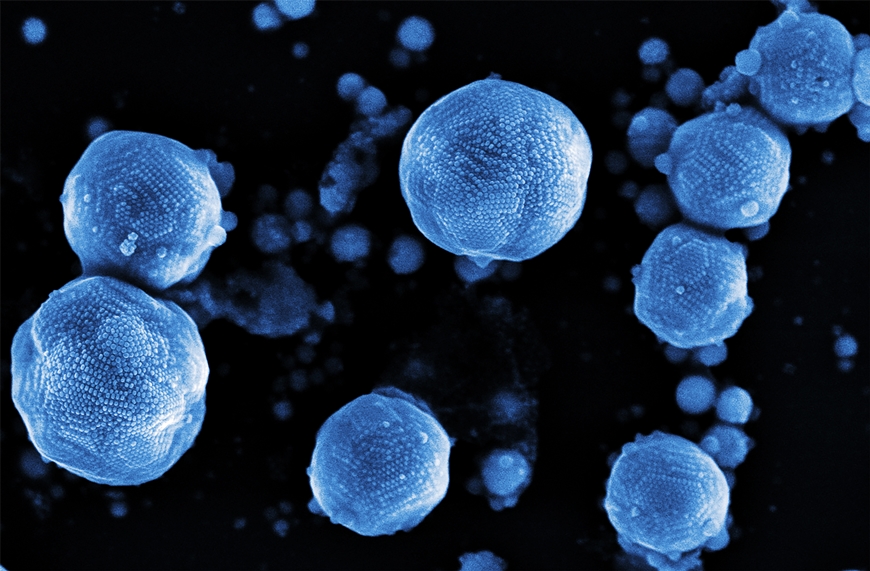
Crystal structures can be created not only from atoms and ions, but also with building blocks that are 100 times larger and have hardly any attraction to each other. These structures are called superlattices. This electron micrograph shows how this works: The individual building blocks are dissolved in the solvent toluene and a surfactant. This forms small droplets. Slowly, the toluene evaporates and the droplets become smaller until the building blocks have to move close together. To save space, they form crystal structures. Researchers from the Functional Inorganic Materials group are already experimenting with superlattices for which there are no natural models: In addition to cubes and spheres, they use building blocks in the form of discs or flat pills. Image: Empa
Further information: Empa - Thin Films and Photovoltaics - Nanomaterials & Self-assembly
Empa Quarterly #77: Paving the way for solar fuels
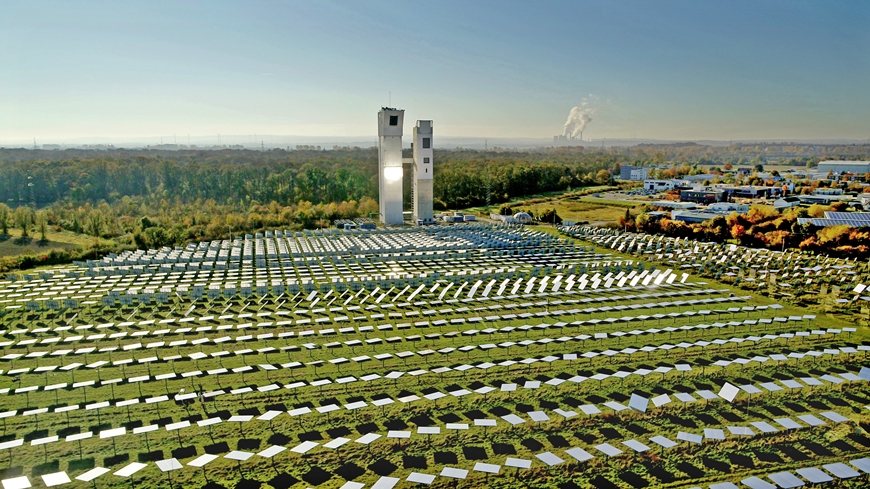
In August 2022 the ETH Zurich spin-off Synhelion has become the first company in the world to succeed in producing syngas on an industrial scale using only solar heat as an energy source. The successful demonstration took place at the multifocus solar tower of the German Aerospace Center (DLR) in Jülich. Synhelion's unique technology uses high-temperature solar heat to produce syngas, which is then used in standard industrial processes to synthesize liquid fuels, such as kerosene, gasoline, or diesel, that are compatible with conventional jet engines and internal combustion engines. To enable the chemical reactors for solar fuel production to operate around the clock, a cost-effective, high-temperature thermal energy storage is developed together with Empa's Laboratory for High Performance Ceramics.
Further information: www.empa.ch/web/s604/synhelion-energiespeicher
Empa Quarterly #76: One peculiar pet
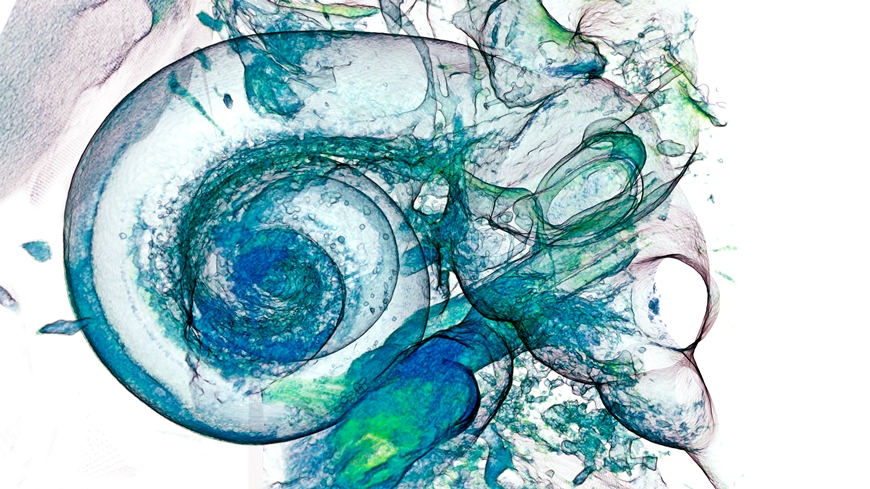
The body is the house of the soul, as the philosopher Philon of Alexandria put it some 2,000 years ago. In this house, the so-called cochlea, the snail, is our pet. The delicate bony structure in the inner ear houses our sense of hearing. Researchers at Empa's Center for X-ray Analytics in Dübendorf, in collaboration with the group of Image Guided Therapy at the Artog Center in Bern, examined the cochleae of healthy subjects using microcomputed tomography. The aim of the imaging technique is to precisely determine the microanatomy of the cochlea in order to optimize surgical interventions when inserting hearing prostheses. If hearing is impaired but the auditory nerve still intact, a cochlear implant can help. Inserting the tiny implants is risky, however. Computer tomography scans can provide helpful insights.
For further information on the topic please visit: www.empa.ch/web/s499
Empa Quarterly #75: Floral splendor from the lab

The New York and Istanbul based artist Sonia Li has created an artificial flower garden with her walk-through installation as the center of the compassion mandala,"Buddhaverse", which also features two technologies from Empa's Advanced Fibers lab: an artificial turf made of bicomponent fibers with a polyamide core and a recycled polymer film coated with a conductive nano-metal layer in Empa's plasma coating facility. Lasers were used to cut floral motifs out of the film, which shimmer in a multicolored way in the installation's UV light. The conductivity of the nano-coating will be used to create a space with interactive multi-sensory experiences when the work is developed further, the artist said. Sonia Li was supported by the TaDA Textile and Design Alliance during the previous grant period. The temporary installation was showcased at the final exhibition at the end of her residency. TaDA promotes interdisciplinary works by artists from all over the world that combine contemporary art with textile innovation and tradition in Eastern Switzerland.
Image: Ladina Bischof / TaDA (https://tada-residency.ch)
Further information : www.empa.ch/web/s402/nanocoatings
www.sonialidesigns.com/
Empa Quarterly #74: Teaching fungi how to write
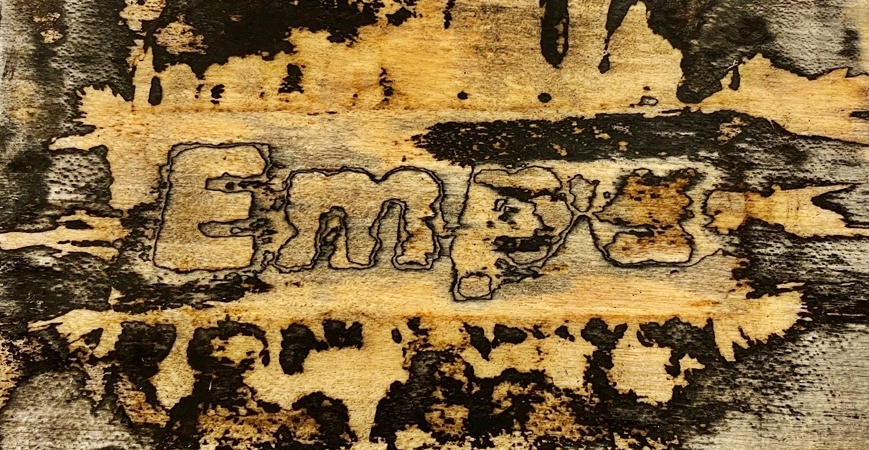
Spalted wood is a highly sought-after material in the high-end furniture industry. In a newly developed process, Empa scientists led by Francis Schwarze have succeeded at controlling the spread of fungi in native wood types. Recently, they created an elaborate clock one meter in diameter made of spalted ash, beech and maple wood using the soft rot fungus Kretzschmaria deusta. The fungi were even taught to write some words, and just like first graders, they are still a bit shaky when writing particular letters. Image: Empa
For further information on the topic please visit: www.empa.ch/web/s302/bio-wood






